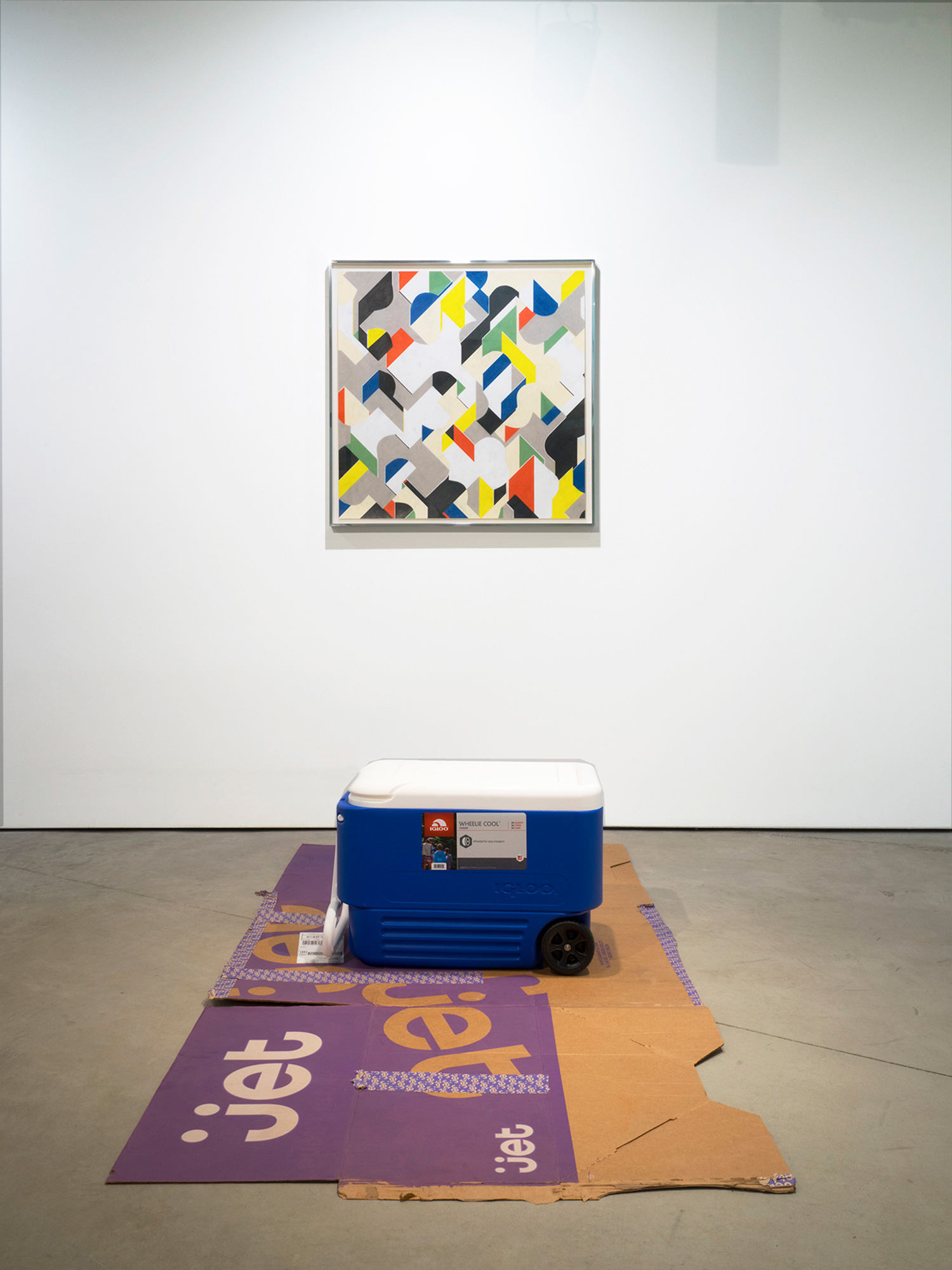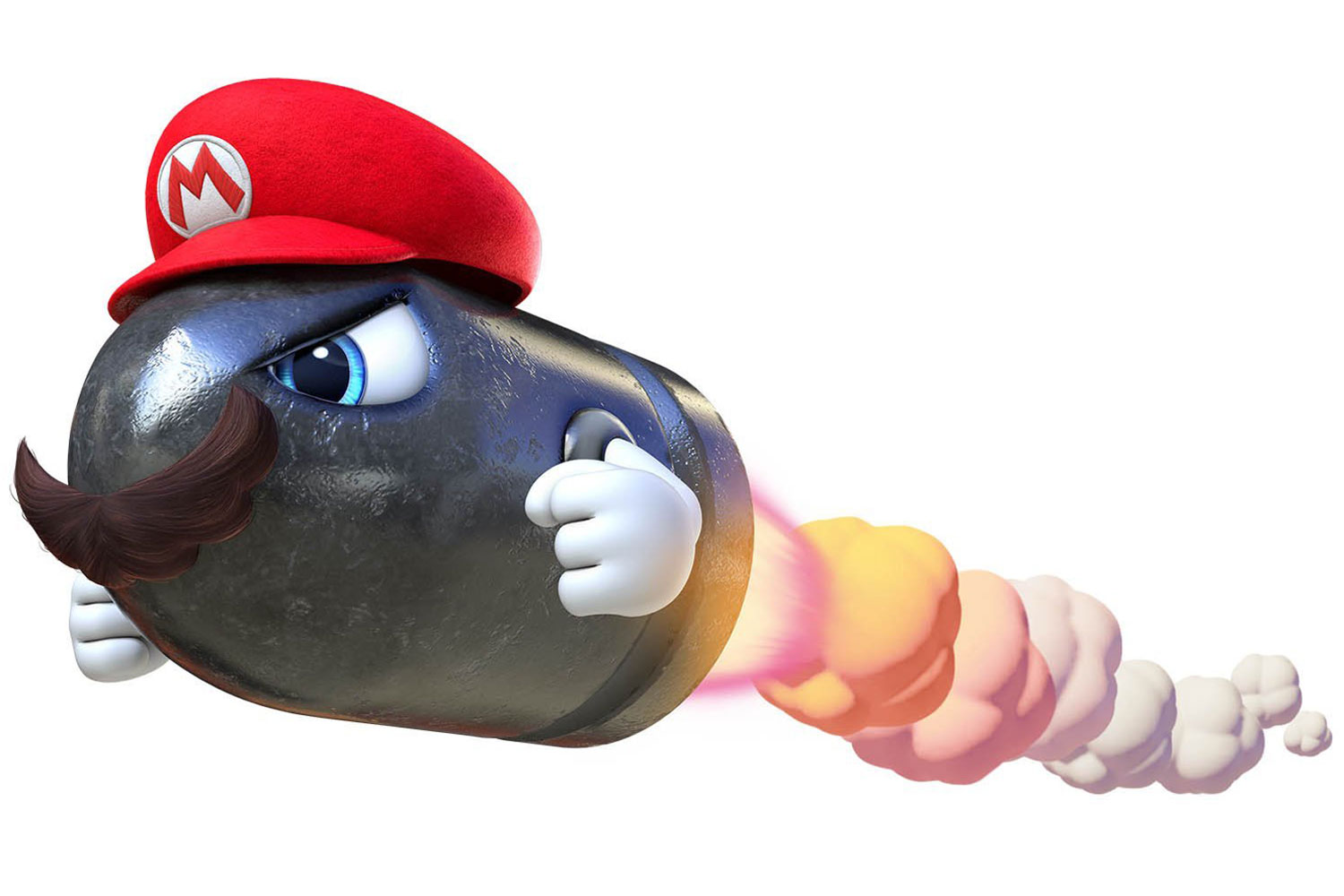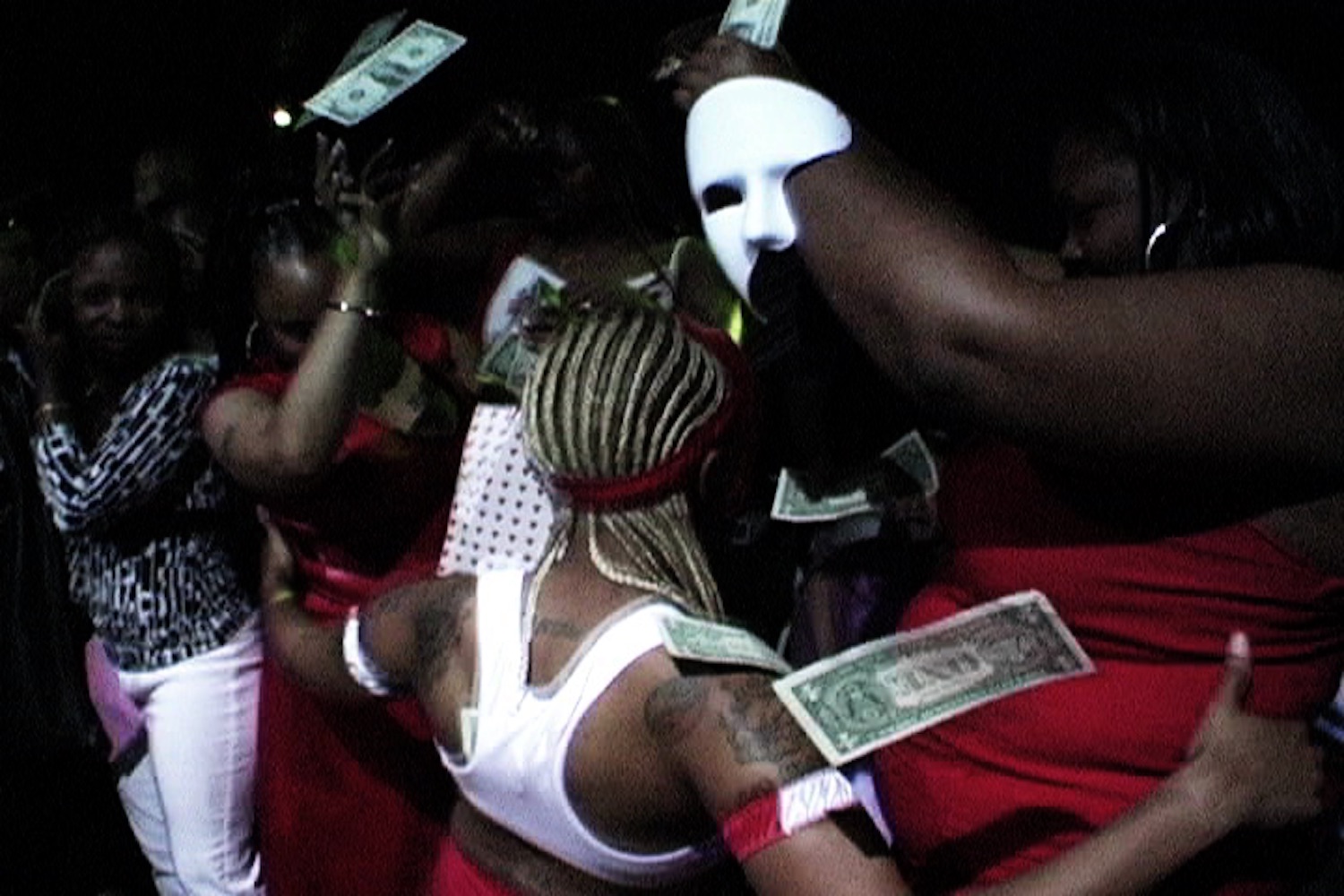Mental Escape is a series of live interviews exploring how the art world responds to today’s challenges. Livestreamed from Flash Art’s Instagram, Alexandre Stipanovich interviews artists, curators, gallerists, critics, and collectors about their hopes, fears, doubts, visions, and projects they are dreaming of pursuing once the dust settles. This series took place during the COVID-19 lockdown.
Welcome to the first episode with Miles Greenberg, artist and performer.
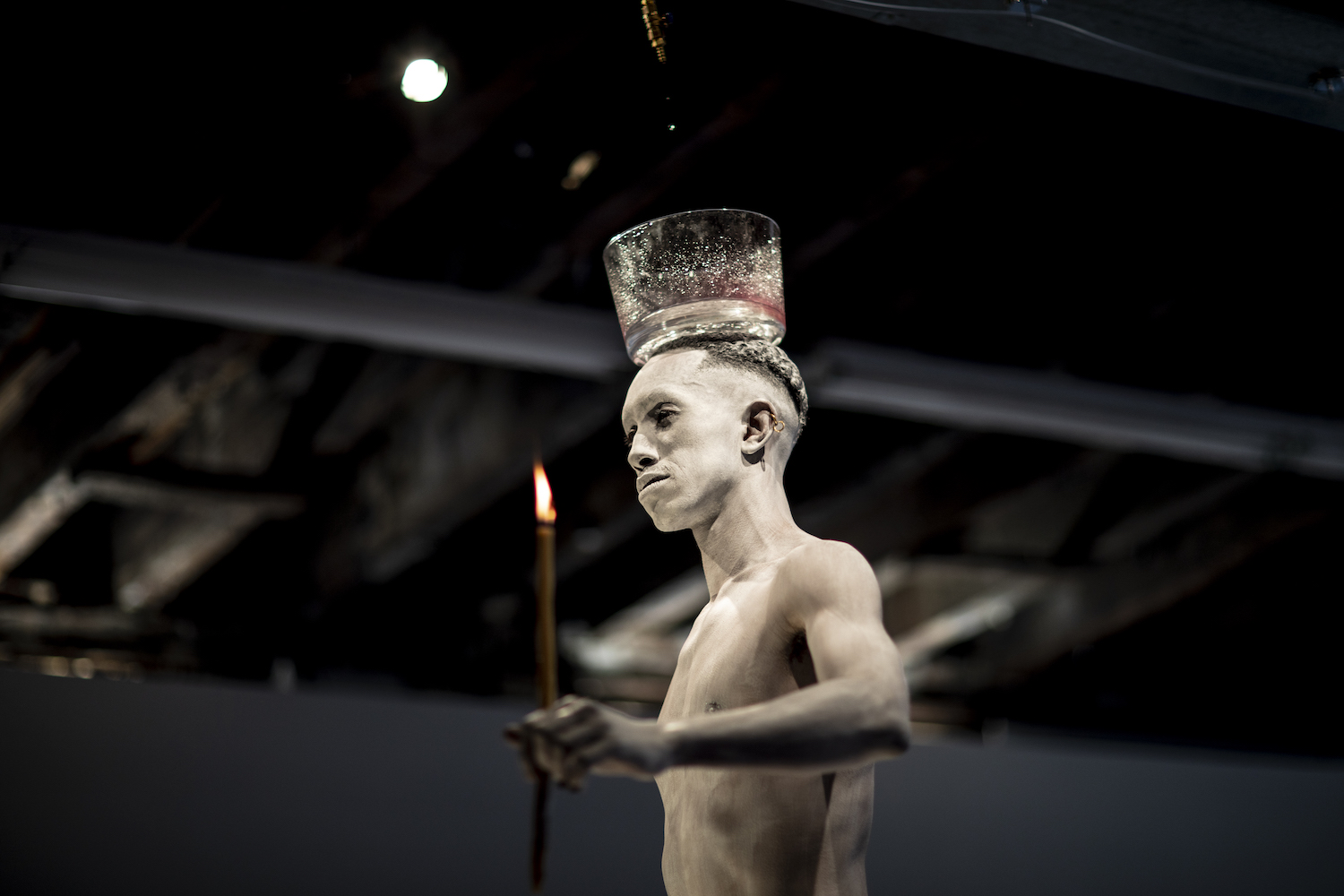
Alexandre Stipanovich: Hi Miles. How are you?
Miles Greenberg: I’m great. How are you?
AS: I’m good. I wanted to ask you a few questions. Of course, this big crisis affects your everyday life. On a more personal note, I wanted to know more about the man behind the performer. I would start with your background. You’re interested in a lot of various things around the human body. I was curious to know how that came about. How did you first become inspired by movement and choreography and space?
MG: My mother was in the theater for several decades. That was something that was kind of embedded into my DNA pretty early on. I grew up in Montreal, Quebec. We have an education system that’s of structured a little bit differently from the rest of the country that takes an extra year – It sort of counts as your undergrad, but you don’t quite get that full autonomy in your major until a little bit later. I didn’t like that, so I dropped out quite early.
I knew what I wanted to do in some capacity, but I didn’t really have the tools. I never really went to art school, so I didn’t have the technical skill to paint or to sculpt. I got into Central Saint Martins eventually, which I didn’t end up pursuing.
I just did residencies. I never had any space to screw up one hundred thousand times and know what a polymer even is or how to cast resin or anything like that, so I had to translate those to my body because that’s what I left with and that’s what I had at my disposal. I felt fast at home in my own creative initiatives. I told myself I would go back to school when it made sense. That was five years ago now, when I left grade twelve, and I have to say it hasn’t quite made sense to go back yet.
AS: Five years ago. That’s pretty recent.
MG: Yeah. I’m twenty-two now. I moved out, left school and started working. I got a studio in Montreal and started doing live performance events and participating in them here locally. I curated a couple of shows just in, like, storefronts.
Performance was made an option to me when I was thirteen, when The Artist Is Present (2010) happened. My mom was a big fan of Marina’s work. We flew to New York to see it at MoMA. That was definitely a bit of a catalyst for understanding a context in which you could make serious art without all of the accouterments.
AS: Tell me about the mindset. Before the mindset of the performance, which is usually very long — six, four, eight hours sometimes. I’d like to know how you make sense of different cultures you explore, like Butoh or Afrofuturism and more, maybe Marina Abramović’s influence. How do you use all those? Does it come naturally?
MG: I come from a very young city, a young country. I feel very lucky because Canadian is sort of a non-nationality. People here are brought up here with a culture of mobility, which is an enormous privilege, first of all, but one that comes partly from an increasingly evolved discourse around Indigenous land rights. By the time I was sixteen going out to shows in young queer spaces, there was acknowledgment of Montreal’s Indigenous name, Tio’tia:ke, on flyers for punk shows. Young people here know what it means for us to be here and want to be responsible global citizens from jump. There’s still tons of work to do, but it’s become a much more prevalent conversation. And when Indigenous rights are recognized, a healthier society just follows.
I grew up traveling a lot because my mom’s work. I speak six languages. Having that permeability with the world was always a priority. A desire to communicate is really important for anybody, especially in performance, because at the end of the day it’s kind of about a dialogue.
I totally didn’t answer your question but, yeah… Butoh, Marina, Afrofuturism… I don’t really want to get into it… Wilson, Lock, Lecoq, Vodou – Every teacher, principle or school of learning that has come into my life and stayed, manifested in knowledge, has done so for a reason. The common threads are private and very strong.
AS: Touching on that idea of universality, and maybe something that could be felt by anyone who walked into your last performance, for example, is the sense of authority maybe.
MG: Authority… No, I think a lot about the experience of the performer in tandem with the experience of the audience and how those spheres organically intersect. I think of it more as a Venn diagram, because I’m not experiencing everything that the audience is experiencing. The audience is definitely not experiencing everything that I’m experiencing, but there’s a mutuality and a place where those touch. I think that liminal space, that synapse, where things fire between, is sort of a real sweet spot. That’s where my whole love for this medium comes from: it’s so immediate. You have that with a sculpture. You have that with a painting, but in a different kind of way, with a distance from the impulse, no, I’m giving you the impulse live in technicolor!
I don’t know much about authority. That wasn’t what I was trying to exert. I just felt solitude. It was isolation. I was going through some heartbreak at the time. There was some romance in there. There was some longing.
PNEUMOTHERAPY (II) was all about lungs. Several cultures and schools of thought from around the world – notably traditional Chinese medicine – associate lungs with grief. Grief is represented a lot in gesture and in dance and rituals throughout the world as this kind of caving in at the ribs; the intercostals, the diaphragm and the sternum all just shrink.
I wanted to find a way to heal that imbalance. I thought: if somebody could witness somebody else healing that, reconciling that, almost like a frog dissection splayed out, like a real exemplar, ‘Exhibit A,’ and then make that healing almost like a dance, then maybe they could start to do that within themselves. That meant something to me. My Vulnicura.
A lot of unconscious references came out in post. For example, you could look at it as a giant music box. It’s really strong for me that that was totally incidental. The rotating figure in the middle, very solitary. I read that it was an old Southern tradition in America that women would give music boxes to their lovers, especially mistresses. It was sort of the mark of ‘the other woman,’ and this longing. There’s a whole episode of The Golden Girls about it.
The flowers – four-thousand-plus stems of lilies and hyacinths – were there so that your lungs were filled with this big, heavy, fragrant air… Your chest gets heavy and romantic.
It was also inspired by the medieval belief that illness traveled through smell, this idea of miasma and the cloud of illness, because they didn’t understand, obviously, how particles and pathogens actually travelled. They interpreted it as a sort of ethereal gas that would travel from person to person. That’s why the witch — not witch doctors, but the plague doctors — wore those beaks. Those beaks were stuffed with flowers! Like an N95 for bad bubonic vibes. Did it work? I don’t know. It was at least a very emotional attempt. That’s what it all is for me. Everything is an emotional attempt.
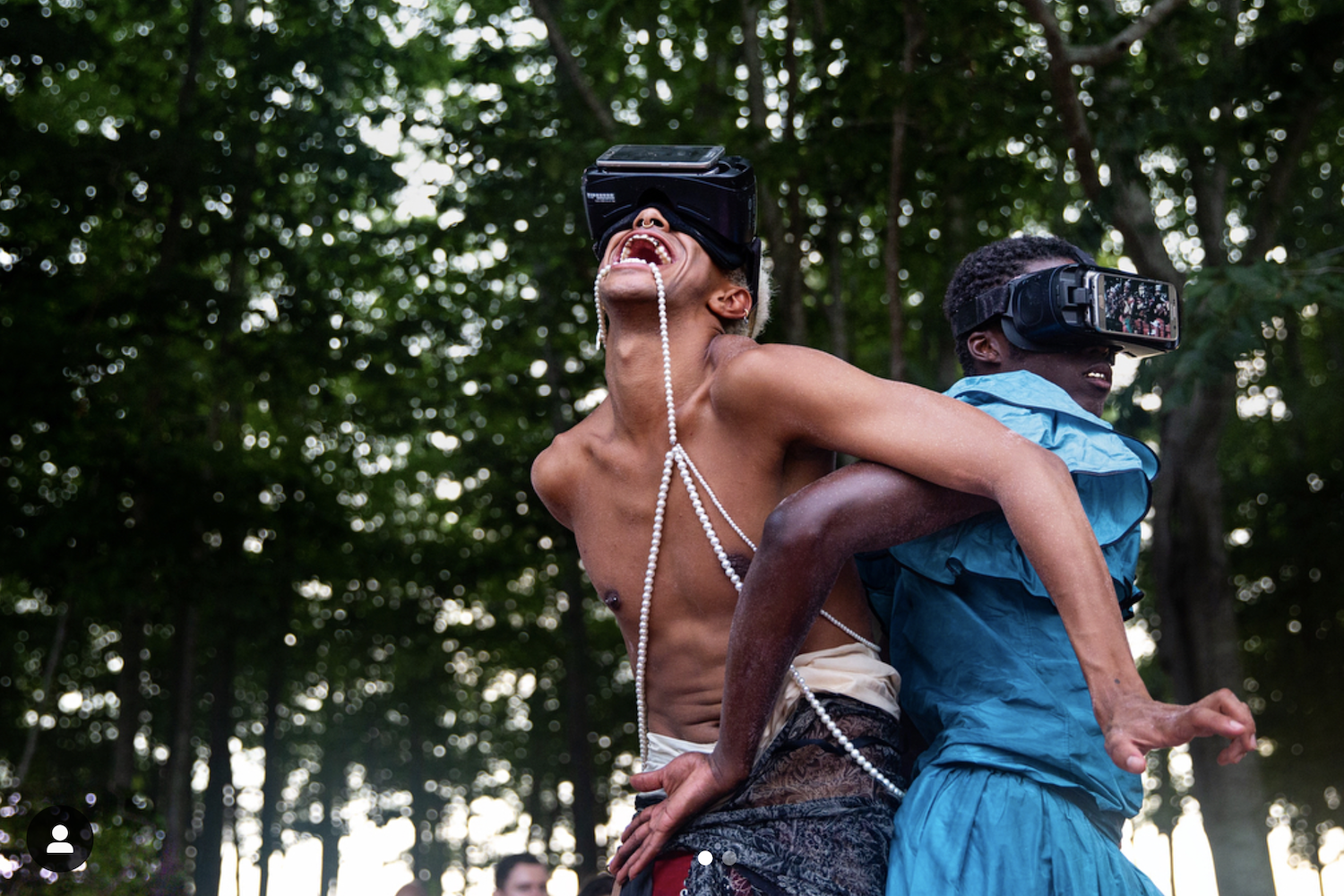
AS: The soundscape is also very interesting and very hypnotic. We definitely step into a different time-space realm, and it’s fascinating. I was wondering: How do you feel after six hours? You feel exhausted, but are you still clear in your mind or are you in a different state?
MG: It’s actually seven, just for the record. I do an hour before with no public. Six hours is what the public is usually invited to. That was my compromise, because I wanted to get into it. A big thing that I’m really resolute on — typically, typically, typically, everybody gets kicked out before I finish, so that there’s no beginning and no end. We did have an end at Perrotin for logistical reasons.
My dear friend (JJ)ESUS made the soundtrack for me. He made a whole amazing two-hour loop with rises and falls but then I just said ‘take these six seconds in the middle and stretch it out for the whole seven hours.’
I love that people felt transported. I was thrilled to come back to the gallery a few days later and they’re like, “People are still asking us if the performance is going on.” I think that’s fantastic because it really makes me feel like I’ve done my job, having built something sculptural that feels infinite.
How do I feel the next day? My boyfriend could attest to the fact that he passed out before me on the nights of both occasions. After HÆMOTHERAPY (I), I watched Law & Order, did the dishes and went to yoga the next morning. The rigorous preparation is for the performance itself, but is also partly so that I bounce back and so that I don’t collapse in the aftermath. It only takes me about thirty minutes to come back mentally, really.
AS: How do you prepare?
MG: It’s very, very strict. I do infrared saunas every two days. I do cryotherapy right after, so I blast my body with subzero temperatures. It helps give it resilience. No alcohol and no caffeine two weeks before. Low-glycemic, all raw, all vegan for about two weeks before. Colon hydrotherapy. Intermittent fasting. First thing I drink in the morning is lemon water with ginseng and a blend of adaptogens and mushrooms. Warm! This is very important.
AS: Where are you mentally when you prepare?
MG: I had lunch recently with Helga Davis, who’s this amazing artist. She was the original star of Einstein on the Beach (1976) with Bob Wilson. That was obviously a very intricate, complex piece of theater to execute, enormous amount of endurance and control. She was like, “People ask me all the time if I’m meditating.” And her answer was roughly, “Hell no.” She said “If I wasn’t on the ball, if the tip of my finger was not in the light, it was not going to be right.”
That’s exactly how I feel. The second that I started to dissociate in my mind while I was up there, I almost fell off of my rock… which I saw in the video in post, I was like, “Oh my god.” I think that you have to be present for this kind of durational act. Sometimes you go very far, and by all means go with it and but tune your awareness into where you’re going through bodily rigour. I always leave a show having learned something new. Nothing unexpected, but always something new.
My preparation itself is private.
AS: What is your interest in hypnotism?
MG: I don’t know much about it. I’d like to know more. I lived in Paris for close to four years. There was a big culture. I knew a lot of people that were going to go see hypnotists. I was like, “I’ll do it at one point, but I’m not ready yet.” Maybe now. Maybe after this. Maybe.
AS: Do you think you’re hitting a note of that?
MG: Yeah. It’s sort of an inspiration. Part of the reason that I haven’t wanted to delve too much into hypnotism is that I wanted to see how instinctively my practice developed into my own language of hypnotism and how the things that I construct and the spaces and paradigms and the context that I try to build can eventually, somehow, turn into a hypnotic space, but by means of my own language. I’d be very into learning more at some point.
AS: You need the people to be able to work, to be able to perform, right?
MG: I don’t know yet. I’m shooting something tomorrow. That’s going to be for camera. Have I ever really performed with no audience and no camera, nothing, just alone? No, not really.
What is now happening, and with good reason, is we’re being conditioned to fear the things that give us that kind of primordial comfort of human touch. Unaware of what it may contain, we must assume that our asymptomatic bodies will betray us. That’s heavy! What could more deeply exacerbate our fear right now than to deprive us of physical solace? I think this pandemic is really quite unique in that way as far as crises go. We’ll adapt, but it’s traumatic.
I’m trying hard to consider what people actually need from me right now.
Off topic, I will say that I think it was a spooky coincidence that my last piece before a massive respiratory pandemic was an artwork about healing through the lungs.
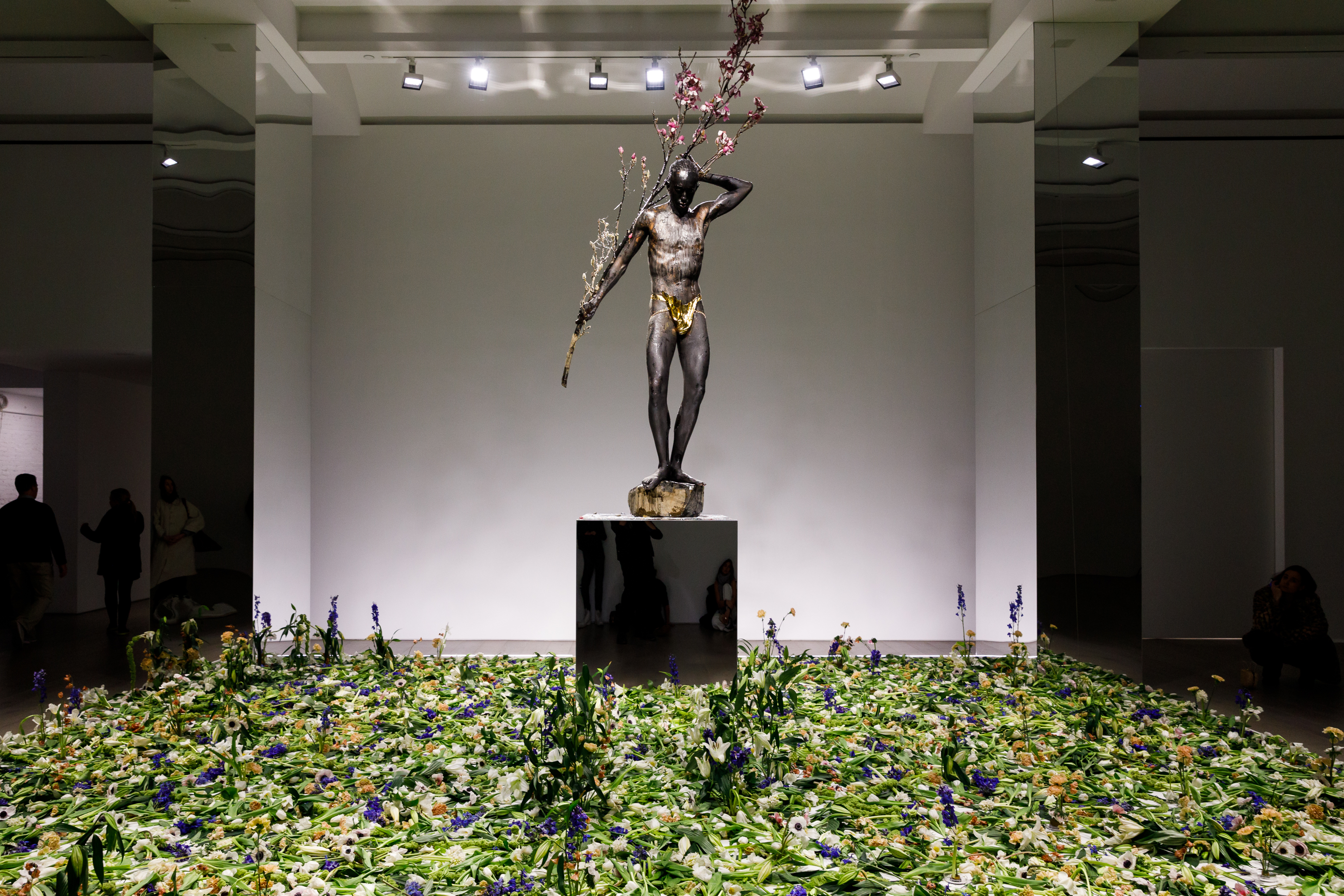
AS: Like an oracle. Do you think about your next performance or do you just rehearse?
MG: I had a lot planned before this all happened. Now a lot has changed. I have things in the works. I’m keeping everything quite fluid, which is, I think, interesting for every artist right now. There’s a lot of pressure to keep operating as we always have been. It’s okay not to have to produce right now.
As far as rehearsals, no. I think that my body and other bodies – human tissue – count in the same architectural value as a stone or a flower or a wall or a pillar. The only difference is how time acts upon each part of the whole. After seven hours a body will start to cave in. After seven days your flowers will start to wilt. After seven hundred years you might start to see a rock change shape a little bit. I think that the structure is always the structure, but how each component of it evolves is sort of, for me, a part of the dance of the materials, and I think that my body is a material like any other. So, by that logic, a performance is just a sculpture in rapid decay.
AS: You are also interested in perfumes and olfactory architecture. How do you recreate that? Is that part of the performance as it happens or do you have some experiments beforehand?
MG: It’s the first thing I think about. It’s usually kind of what evokes shapes for me. It’s sort of this synesthetic relationship that I have to smell. I feel like I see it. I’ve always had a real fascination with it. It’s very closely related to memory, being that the shortest sensory nerves of the body, between your sinuses and the olfactory bulb, which is right here in your third eye, process and deliver smell. It’s like fractions and fractions and fractions of millimeters. It’s one of those senses that really touches people very quickly and very efficiently. It’s very romantic in that way. That’s why we think of it as such an intimate and personal thing. Hormones and pheromones are what attract us to reproduce. That’s that part of our human architecture. I see shapes in smells and I think about how they come and reach people. If I’m going to rehearse with a group — I will do rehearsals if I’m doing group performances, a little bit, just to get kind of a shape of it, but never too concretely — I make sure that the scent is present, literally from the casting, the first meeting with the performers right up into the performance. It triggers memory. That’s how I passed my exams in grade school. I would spritz each subject. I was using free perfume samples and not essential oils at the time so Math was, like, Burberry Brit or something. It’s really just a personal strategy.
AS: Tell me a little bit about House of Ninja. Did you have any acquaintances or friends there?
MG: I had quite a few friends in the ballroom scene in Paris. I used to walk a little bit in a couple of categories, but I was never exceedingly good at it. I didn’t get deeply involved, but that was a community that I really felt quite well received by fresh off the boat. There’s a tiny one in Montreal as well, to some extent, that I kind of hung out around as a teen. I still have friends who are very in it and performers whom I’ve involved in my work in Paris, like Snake Ninja. The way that his body moves in particular, it’s like reading a very strange book to me. It’s completely bizarre, so I love it.
AS: It’s incredible. I organized a small performance with House of Ninja in New York, I think two years ago, for a fundraiser, with the new generation and the older generation. It was insane. Tell me a little bit about you. On a day-to-day basis, how do you keep the morale up? How do you keep your spirit up?
MG: I have been able to read a lot. I’m trying to learn as much as I can.
I’m studying Russian, finally, properly, with a tutor on Skype. Also Portuguese. I’ve also adjusted my sleep schedule. I’ve just learned how fully nocturnal I am. I have not fallen asleep a single night, since this started, before 4:00 a.m. I actually woke up thirty minutes before we started talking. My sweet spot for writing, for reading, for cooking, anything, is 1:30 a.m. My friend James Merry told me recently that each cell of the body has its own predetermined circadian rhythm, and some people are predisposed night owls on a cellular level. I’m very happy to be able to live according to that for a while.
AS: I’d like to know if you could recommend a book or movie or an album.
MG: I really like Haruki Murakami. I love his surrealism. It’s very cinematic to me, and it’s given me a lot of inspiration. It also feels like traveling. Even if you’re not into fiction, for me, it’s just so sensitive, and that’s really important to me — to stay sensitive. I’ve read all of it, so I’m not reading that right now. I’m almost done with Notes from the Underground, Dostoyevsky, because I want to read it in the original language before this is up.
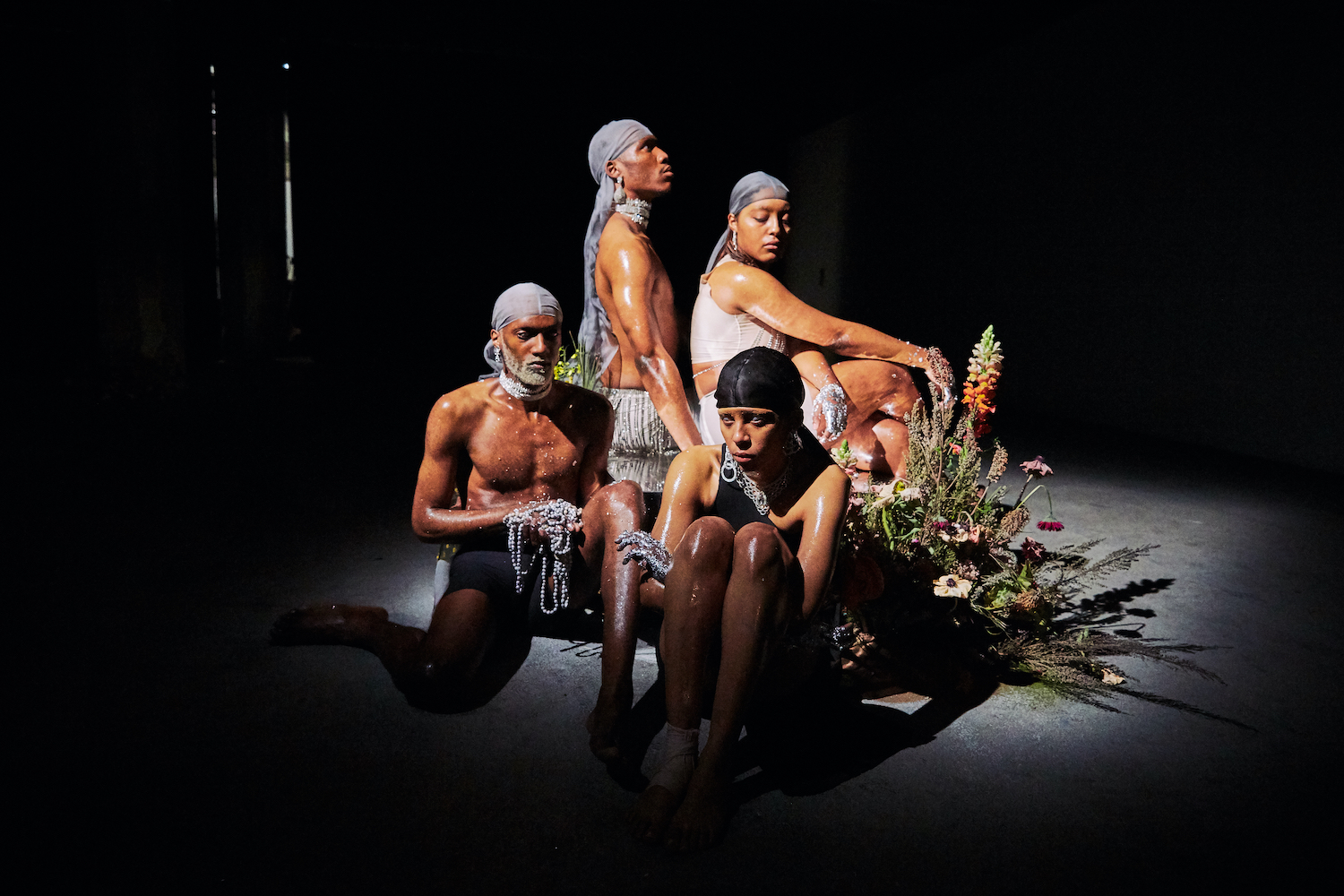
AS: What about movies? Let’s talk about movies. Death in Venice was also a movie. What about Alphaville?
MG: I’ve actually never seen the Death in Venice movie. The book is fantastic. Alphaville is probably one of my favorite movies of all time by Godard. I have always been a big fan, but that was the first movie I ever saw by him and it blew my mind. For me, it’s the dance, it’s the sequence with Anna Karina and Constantine. Amazing. I also saw Persona again, which is also an incredible piece of poetry. If you’re going to watch it, watch also Liv Ullmann’s commentary on it afterwards, because she really gives a really great context to it. I’m also obsessed with Tarkovsky right now. That’s sort of what I’ve been watching. That and I’ve been watching Battlestar Galactica, start to finish. I really like that.
AS: You used Alphaville as a reference in your work.
MG: Yes, I did. It wasn’t directly about dystopia. That was just the name I gave it as a work in progress. I was really lucky to be working with these twenty-five amazing performers. Once a week we would do these big public presentations. I was living inside of a studio at the Palais de Tokyo as their first in-house artist in residence. It was one year ago, and it’s going to make me cry because it was one of the best times of my life hands down. The best team.
That was my goodbye to Paris. I had been living there at that point for three and a half years. It was amazing – it was my education in a lot of ways – but I found that the way that Black people exist there in general, is a negotiation. Not unlike in America, but for different reasons –– there’s just very little discourse in Paris. Race is taboo. French society has a woefully misguided colorblindness complex. I thought my work would be better suited for America, where I had already, at that point, decided to move.
I was writing all of these performance pieces that were using only Black performers, and everybody kept thinking they were way too political, too political, too political. In France, if it’s not serving fashion in some capacity, it doesn’t really fly in a lot of contexts. I was just so bored and frustrated. The gag is, my work isn’t inherently political. That’s only to say, if you walk into one of my shows and my body reads as political, best believe that that belongs to you, not me.
I decided my number was twenty-four: after twenty-four rejections of pitching this whole body of work – including an opera that I wrote after being at Bob Wilson’s Watermill Center –I was just going to leave. I wrote a cold email through a friend of a friend, whom I went to see at Palais de Tokyo, to one of the curators there. They finally wrote me back two weeks before I was going to catch a plane. I had already given up my apartment – I moved into the museum less than two months later.
Alphaville Noir was about taking space. It wasn’t dystopia for me. It was a utopia. It was creating this liminal space of creation in which, without being interactive, every single performer had the agency to communicate and every single audience member had the agency to consume exactly as they so wished.
It was a big chamber (they gave me the whole basement level) where we set stages. It was inspired by Alphaville in some ways, aesthetically and in terms of its rhythm, but the shape of it was Haruki Murakami. It was After Dark. After Dark takes place over one twelve-hour night. I divided the space into quadrants loosely corresponding to the face of a clock: four sections of three. There were four three-hour performances.
Basically, if you look at the whole month… Oh my god. Eden [Tinto-Collins] is in the comments. Eden is one of my absolute most incredible performers I’ve worked with in Paris – If you look at the whole month, it was one night basically. One twelve-hour durational performance, split up. Everybody was given cues to memorize. The room would flow as the segments of a clock. It would start at one point. It would go around. It would move to this point and that, all around a central axis, where I was calling numbers and letters which were preset with gestures and directions. I would move the performers like chess pieces to direct the flow of the crowd over time from one quadrant to the next. At the end, we would break it out into a big dance party, every night. That was what we did. It was great.
AS: Tell me, how do you reclaim a space without moving? I would imagine a dancer reclaiming a space would need to explore the space — maybe the height and the intention of the movement.
MG: I don’t think that I’m trying to exert anything on anybody. That’s important to understand. I’m not trying to dominate a White audience, that’s really not the idea.
Part of Alphaville Noir (2019) was creating stages where the performers could bring their own art as-is into the show. I was inspired by Mickalene Thomas for that. She creates these spaces–these living rooms–where she presents young, black artists within the context of her exhibition. I thought that was really smart, so that became part of the mission. I had dancers. I had performers. I had people from all different backgrounds and corners of the diaspora who were able to bring themselves to the table. Josh Johnson, local friends like Nomai Camara, Eden Tinto-Collins and Kengné Téguia, the legendary Ms. Carrie Stacks from London. So, while technically only one young Black artist was given a show, a dozen or so young Black artists got to exhibit their personal oeuvre in the museum space every few nights. That was an achievement. But me personally, how do I ‘reclaim space without moving?’ I think that’s beside the point. I’m just trying to be in it, first and foremost. We all are.

AS: Inhabit maybe.
MG: When I’m performing, that’s definitely not what I’m thinking about. That’s not what any of this is coming from. My concerns, once I’m up on stage, are that I’m dealing with a broken heart or something like that, whatever the subject matter may be. I’m lonely, or if I feel isolated, or not. I think I’m just trying to build an ultra-hypersensory chamber –– I’m trying to create a room that’s echoic for everybody’s senses where they all crescendo and melt together into movements, like music.
I didn’t grow up around other Black people. I grew up with my Ukrainian mother and traveling around the Europe with her theatre troupe. I had no connection to my Black body whatsoever. I thought I could choose to be from nowhere, then I thought I could choose to be from everywhere, but neither really worked for me. Blackness wasn’t ever introduced to me as a culture, it was a physiological barrier, a filter that I had learn to interpret myself through. My hair made no sense, my skin made no sense, it sucked. That is to say that for most of my life, Blackness was this mystifying force that isolated me and defined me as other and little else. But the impulse was always to make room for it, whatever the hell it was. It wasn’t until I was an adult that I started to connect to Black culture and interpret the gestures I was prone to as part of something bigger than me. But by then I’d already made up my own Blackness just based on me.
All that to say, in this work, as in all my work, the Black body is employed as a functional point of departure because that’s literally the only body I understand. That’s all. And if I were to represent human emotions with a white boy on a boulder then that would be alien to me. The gestures wouldn’t correspond to a physiology that I understand as material or subject matter. Black movement is innate and unique.
When I’m talking about reclaiming or reconstituting space, I’m just dignifying my Black body with an architectural situation tailored for and by it so that I don’t have to think about it as other –– Those asinine questions of ‘how does my Black self, energetically or otherwise, fit into this space? How is it seen? Is it too big? Too long? Is it violent? Is it Aggressive? Is it smooth? Is it sexual or sexualized?’ In my work, which I’ll call my house, I can just access directly the things that are concerning to me and create a clear headspace where I can just be. I hope that other people can find ways to do the same act unto themselves in that space. It’s not just for Black people – but yes it’s, Afrocentric.
AS: I wanted to have this interview based on that first impression I got when I walked into that performance. Authority is not the right word. Gravitas might be too strong. It’s maybe just transcendence and how it is to have you here and just going through a different time, a very long time. Maybe it’s pain and vulnerability that allows us to be in awe, really. That was incredible. Tell me about stretching time.
MG: Stretching time. Time is like an ingredient for me. I’m really into numerology. I kind of got that from Marina. I learned a lot about that with her – I initially wanted this piece at Perrotin to last twelve hours, by the way, she was the one who told me ‘baby don’t kill yourself.’ So, seven was the number that we fell on. I have to say, for somebody who considers sensitivity of the body as a central concern in my work, I really don’t think about what the work is going to do to my body until it is happening. I try to liberate myself from my own limitations, such that I can build up to where they need to be to accomplish the things I have in mind and so that I can live up to my creative capacities. If I think about a piece where the human body has to be stagnant for three days straight, I’ll find a way to get my body there. I want to let it live exactly as it does in my head. I’m going to get to that three days, come hell or high water.
AS: Do you think that every performance is a rebirth for you? Does pain bring a new state of consciousness?
MG: It’s often painful, sure. I still am a strong believer in the idea that you’ll never be in more pain on stage than you are in your real life. It’s cathartic, absolutely. You definitely leave different. That does relate to stretching time. Stretching time, for me, is just a strategy. I’m incorporating time into the architecture of these performance situations, these installations, that happen to involve living tissue, that reacts to time in a certain way. Stretching time is a way of making that manipulation more sustainable and expands on the possibilities of what that architecture can include. Just as my physical conditions is very, very important to keep up, and physical fitness is sort of an obligation for me, I think that keeping in tune with my perceptions of time and being in control of them are also just as important.
Your brain consumes twenty percent of your body’s energy at all times. I try to visualize bringing that down to about seventeen percent if I can. Just doing less and focusing more and thinking in a certain pattern, slowing everything down. People have measured the brainwave activity of Tibetan monks in meditation, and it does make a huge difference. Your body ages differently. Your whole body interprets time differently when your mind does. Your physiology changes around how you believe in and incorporate the notion of time into your perceptions. I try to get better and better at controlling that, such that I can do the crazy shit that’s in my head.
AS: Get rid of the noise and go down into the essential. Well, Miles, thank you so much. That was fascinating to hear you.
MG: If there’s noise, there’s noise. It’s how you live with it. Thank you for having me.

